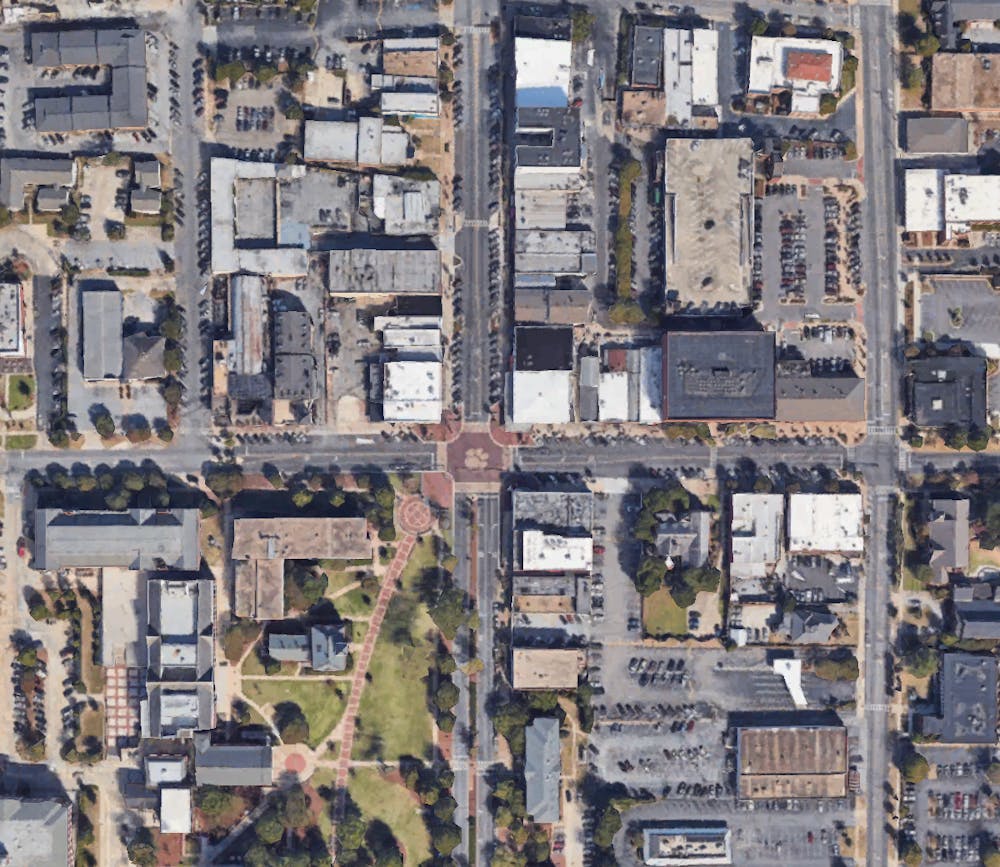Auburn is traditionally presented as a small, quaint college town, but its streets are becoming increasingly crowded as more and more people move to the City each year. While the City’s non-student population has grown significantly over the years, at the heart of the growth is the University that bears its name.
The City said so in its 2018 Comprehensive Annual Financial Report: “From the founding of Auburn University in 1856, the City’s economy has been dominated by the University’s presence.”
The University currently enrolls an all-time high 30,460 students, marking a 21.88% increase in student population since the 2009-10 school year.
At the Sept. 12 Board of Trustees workshop meeting, The Plainsman reported that Bill Hardgrave, provost and senior vice president of academic affairs, introduced a revision to University policy that would cap undergraduate enrollment at 25,000 and total student enrollment at 32,000. Several other Trustees expressed approval of the enrollment cap, and the revision is likely to be approved, but a formal vote was suspended until the Trustees’ upcoming meeting on Nov. 22.
Reasons for limiting the number of students in the future are many, but Jay Mittal, director of the graduate community planning program at Auburn University, asserted an obvious fact — “We cannot have limitless growth.”
If the University were to allow itself to grow indefinitely, more traffic would fill downtown streets, more parking would be required to be built and the City would be generally more congested.
“Every place has a carrying capacity,” Mittal remarked. “Every university has a carrying capacity.”
Once a city exceeds that capacity, its infrastructure may not be able to handle the strain of a large population. The City may be coming close to that capacity, Mittal said.
Undergraduate enrollment at the University currently sits at 24,628, less than 400 students away from the mark at which enrollment is predicted to be capped.
Limiting student enrollment would cause the demographics of the City to change, as stated in the City of Auburn’s 2019 Student Housing Report:
“As the City’s population continues to increase, Auburn’s demographic will begin to transition, with older residents and families with children making up a larger proportion of the population.”
In addition to shifting current demographics, limiting the amount of students at the University may impact the local economy.
Students are a valuable asset to the local economy, and by spending their money at Auburn businesses, paying rent at off-campus housing and purchasing transportation services in the City, students contribute to the local tax base. Levying a 4% sales and use tax is the primary method the City government employs to gain revenue from students.
“Students are an important part of our local economy along with all Auburn citizens, regional citizens, businesses and visitors,” said Megan McGowen Crouch, assistant city manager for the City of Auburn. “Everyone in Auburn contributes to the tax base through the money they spend, from the hospitality industry to retail.”
In 2018, local sales and use tax accounted for 57% of the City of Auburn’s total tax revenue of just over $73 million, according to the 2018 financial report.
Figuring just how much students contribute to that tax base, however, is not easy because the City doesn’t have a mechanism to specifically measure the economic impact of students compared to residents or visitors, Crouch said.
Thus, the effect on tax revenue of halting student population growth at the University would be difficult to determine. Auburn City Manager Jim Buston said that while a stagnation in student population growth — which in turn dictates the growth, or lack thereof, of faculty and staff — is projected to have a slightly negative effect on future tax revenue, it’s one of a staggering amount of factors, a drop in the bucket.
“The enrollment being capped, if we assume there won’t be a dramatic increase in the number of professors or the number of support staff … that is somewhat of a negative,” Buston said.
However, having a more rigidly defined student population will also have its perks.
“On the other hand, when we are allowed to get some confidence in where the University is going, that allows the local government to make plans with some certainty, knowing where that student population is going to go,” Buston said.
Basically, keeping the student population at or around 25,000 would seriously reduce the need for any guesswork on the student population front for the City.
But some business owners have informed their decisions on that guesswork.
A number of student housing developers have built huge housing complexes in downtown Auburn based on those guesses.
One of the most weighty pieces of research that the City and private developers used to analyze the condition of the student housing market in Auburn was the Danter Report. The Danter Report was conducted by Danter & Associates, a national consulting firm, in 2013, 2015 and 2018.
The first two iterations of the report looked optimistic for real estate developers; it painted a picture of a student housing market that was ready to let some additional players into the game.
“The Danter Report is based on the data that we were being given at the time from the University, that they were going to grow the University population, the undergraduate population substantially,” Buston explained. “And so, if you are a developer … and you’re looking at [the Danter Report] and seeing that the University is going to grow 500 or more students per year, that’s a complex. Every year is a new complex.”
Those new complexes came. Among them, 191 College, West & Wright and The Standard.
“And it’s just been recently that the University has backtracked on that,” Buston said.
For some players in the student housing industry, news of this proposed plan may have come too late.
Ray Huff is the owner of Auburn Realty, a local student housing real estate company that owns several properties around the City, most of which are near campus. Huff has lived in Auburn since he graduated from the University and has been in the real estate industry since 1979.
Huff, who ventured into Auburn student housing in 1996, said that the student housing market is oversaturated — to an extent he has never seen before.
The City’s Student Housing Task Force Report, released in October 2019, states that there are 36,508 bedrooms of off-campus student housing.
While the report did not measure vacancy rates in student housing complexes around the City, Huff believes it to be quite high. Van Northcutt of Northcutt Realty, a local student housing real estate company, also believes the market has a high vacancy rate.
And if the student base does not grow, and the excess rooms are not absorbed, Huff predicts that vacancy won’t decrease.
“The effect of capping enrollment is gonna create a larger and larger vacancy rate,” Huff said. “There’s gonna be more product available, and we’re gonna have the same amount of users to fill that product up.”
When property goes unused, it devalues very quickly, which Huff predicts will cause rent to fall in many complexes.
“I envision prices to come down this year … in some places, hold in others,” Huff said. “You certainly aren’t going up any in this market.”
And while the graduate student enrollment is planned to increase under the potential policy, Mittal said grad students are not likely to fill all of these vacant rooms.
“As a quick assumption, I would say most housing that has developed recently downtown, they are all filled by undergraduates,” Mittal said.
Graduate students are typically more scrupulous in their spending and often support themselves financially, which makes staying in expensive locations less feasible, Mittal said.
To fill rooms in his properties, Huff has already started dropping rent prices and foregoing security deposits, a practice he calls, “not good business practice at all,” but one that he says many complexes in Auburn have started doing in order to draw in potential residents.
Falling rent prices, which benefits students, places a burden on many owners of student housing properties in the City. Times like these can make it hard for Huff’s company, and others like his, to sustain itself.
“If rent goes down then our fees go down, and we have less money to cover our bills with,” Huff said. “It makes it very difficult to operate.”
Tough times have hit Huff, as well as other owners, in the past, but this may be different. Similar overdevelopment took place in Auburn from 2001 to 2004, Huff recalls, and it took a toll on his business.
“We’ve all weathered the storms,” Huff said. “But this one’s gonna be the hardest one of all, I can tell you that.”
Do you like this story? The Plainsman doesn't accept money from tuition or student fees, and we don't charge a subscription fee. But you can donate to support The Plainsman.

Evan Mealins, senior in philosophy and economics, is the editor-in-chief of The Auburn Plainsman.





